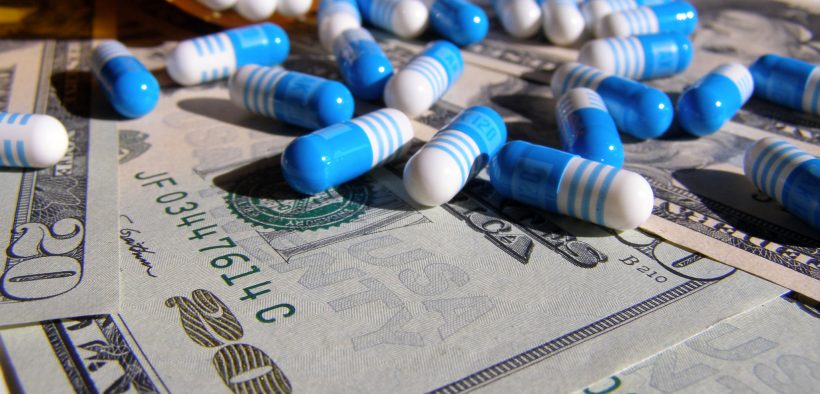The Insanity of Prescription Drug Prices in America

Solution: slash the prices and kill the ads.
(Common Dreams) Prescription drugs have long provided two bad examples of American exceptionalism. They cost three-to-four times more than anywhere else, and we’re one of only two countries in the world that allows prescription drug advertising to consumers.
Far better to be like everybody else. Americans deserve drug prices in line with those in other countries. They don’t deserve a constant barrage of confusing and misleading ads.
Advertising is the lesser of two evils and the simplest to counter: just stop it already. Important voices have already made that recommendation.
TV commercials for prescription drugs always tell consumers to “ask your doctor.” But the companies that pay billions to run the ads aren’t listening to doctors. For the last five years, the American Medical Association has called for a ban on direct-to-consumer advertising of such drugs.
Here’s what the drug makers are ignoring: “[The AMA’s] vote in support of an advertising ban reflects concerns among physicians about the negative impact of commercially-driven promotions, and the role that marketing costs play in fueling escalating drug prices….Direct-to-consumer advertising also inflates demand for new and more expensive drugs, even when these drugs may not be appropriate.”
New Zealand—the lone other country that permits such advertising—could soon disallow it. A large majority of New Zealanders favors a ban, and one might be included in a bill now being considered. Its passage would make America truly exceptional in a truly drugged up way.
Cutting drug prices presents a bigger challenge than cutting out drug advertising, but the rewards would be huge.
Americans will spend over $500 billion on prescription drugs in 2020 (more than 2.2 percent of gross domestic product). The basic research underlying these drugs is almost always carried out with taxpayer dollars at university or government research labs, mostly through the National Institutes of Health.
The research findings used to stay in the public domain, available to any company that wanted to use them. In 1980, the bipartisan Bayh-Dole Act made a watershed change: it allowed for the rights to be turned over to private parties.
While the point of Bayh-Dole was to hasten the harnessing of basic research, it also sent the price of drugs soaring. Spending on prescription drugs had been largely stable at around 0.4 percent of GDP from 1960 to 1980. In the decade after Bayh-Dole it had doubled to 0.8 percent and it doubled again in the next decade.
We now have this bizarre mindset that we have to give drug companies patent monopolies to get them to develop drugs or vaccines, even when the government is paying for the bulk of the research. The pandemic is showing the absurdity of this practice.
As one example Gilead Sciences developed the drug remdesivir, largely with government funding, as a treatment for Ebola. While it turned out not to be an effective treatment for Ebola, it is effective in treating the coronavirus. Gilead is charging private insurers $520 for a single vial of remdesivir. Its actual production cost has been estimated at less than a dollar a dose.
The Trump Administration is taking the same logic to developing a vaccine. Operation Warp Speed is a $10 billion government program to develop, produce and distribute a coronavirus vaccine. At least four Warp Speed contracts (to Janssen, Regeneron, Genentech and Ology Bioservices) exclude standard language “meant to ensure that products developed with federal funds are affordable and widely available.”
In effect, the government is putting up most of the money and taking the big risks. If one or more of these developers hit a dead end, they will still have been paid for their work, the government is out the money. But if they do succeed and develop a life-saving vaccine, the government will give them a patent monopoly and allow them to charge whatever they want, with no restriction whatsoever.
It shouldn’t be too radical a proposition to say that drug companies only get paid once. When the government pays for the research, the drugs or vaccines developed are in the public domain, so they can be produced and sold by anyone as cheap generics.
It would be a great thing for humanity if a low-priced coronavirus vaccine became the first example of a new prescription drug policy in America.















